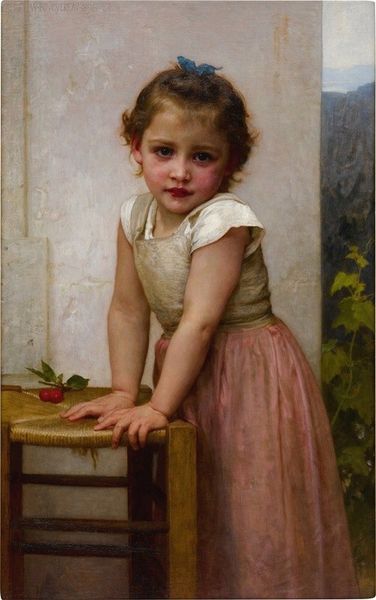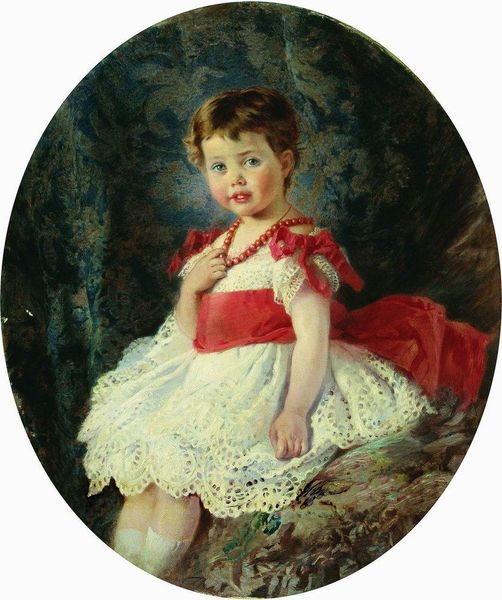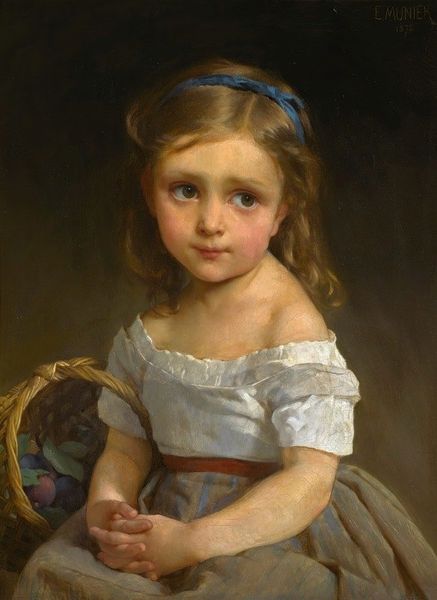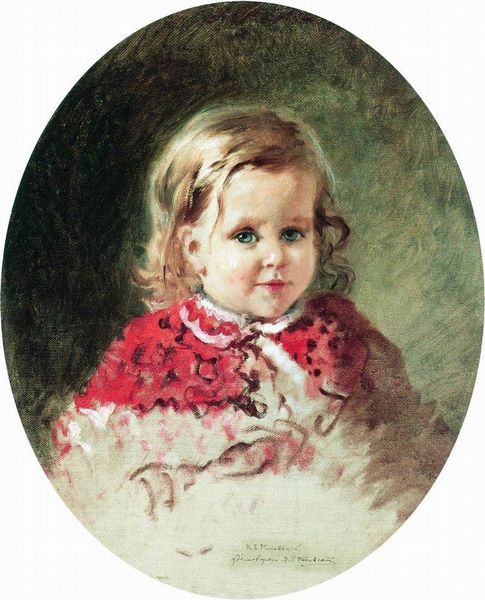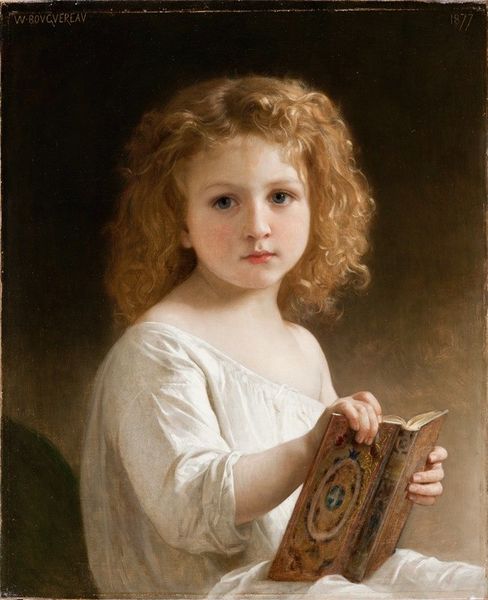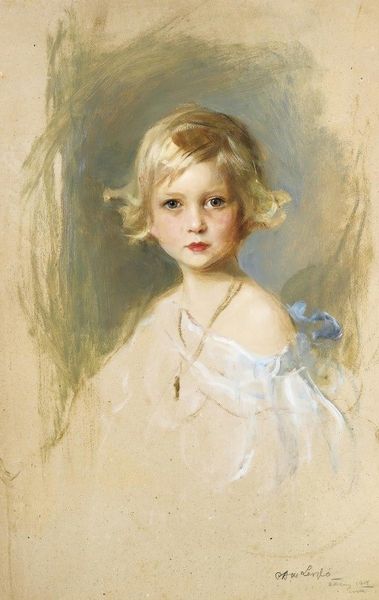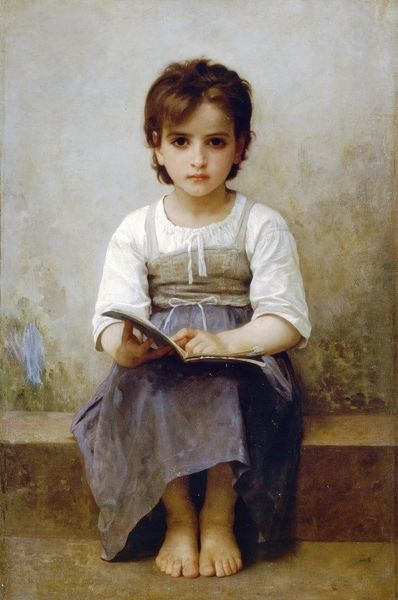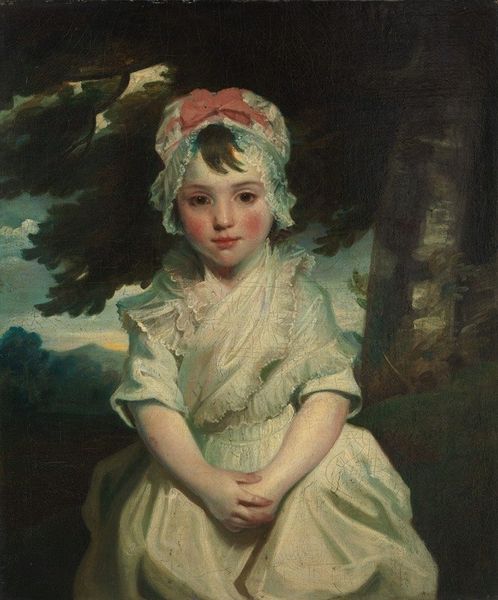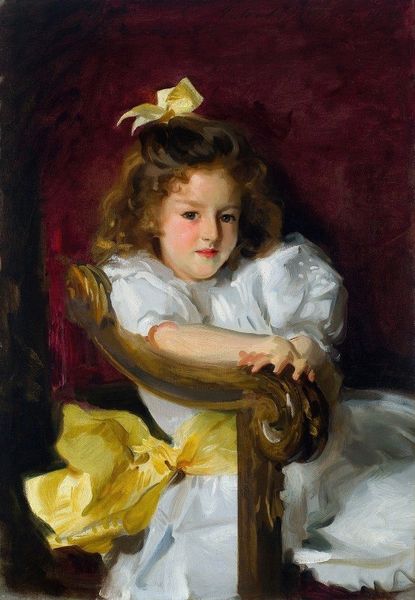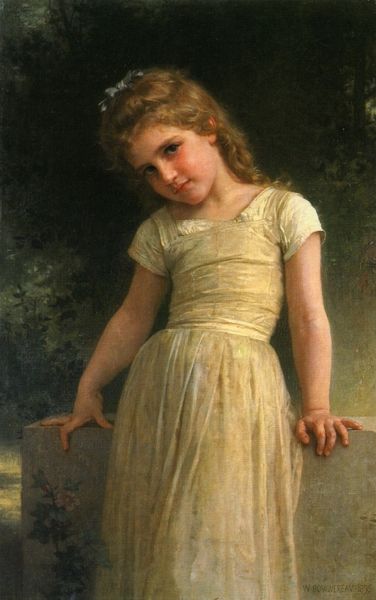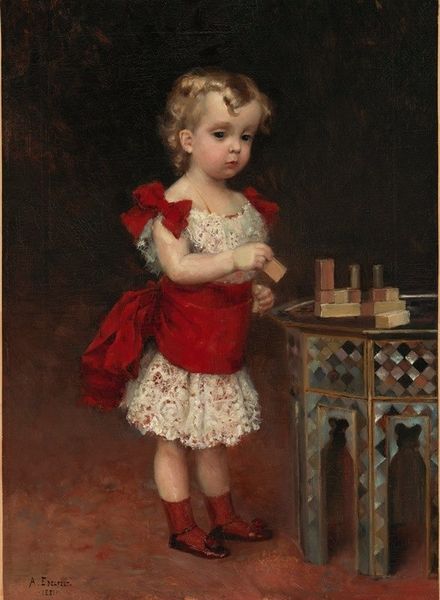
painting, oil-paint
#
portrait
#
painting
#
oil-paint
#
figuration
#
oil painting
#
romanticism
#
genre-painting
#
academic-art
Copyright: Public domain
Curator: Here we have a work entitled "Little Florist," attributed to Thomas Francis Dicksee, rendered in oil paint. The canvas presents us with the figure of a young child, framed by dark foliage. What strikes you initially about this piece? Editor: My immediate reaction is a certain discomfort. The overt innocence, the hyper-feminine presentation of the child with her delicate dress and carefully arranged flowers... it feels like a tableau constructed to fulfill certain Victorian ideals about girlhood. Curator: Indeed. Dicksee, a painter operating within the currents of academic art and romanticism, frequently depicted women, often idealized and staged within carefully crafted narratives. The placement of this little girl in a garden-like setting does conform to popular Victorian portraiture. Such imagery spoke volumes to middle-class patrons. Editor: Exactly! It speaks to bourgeois sensibilities of beauty, virtue, and domesticity. The garden isn't wild; it's manicured. Similarly, the child is impeccably clean and her clothing, though simple, appears freshly pressed. The image speaks to privilege. How might this piece functioned within the art market? Curator: Well, works like this helped to shape societal norms and reinforced middle-class aspirations. Portraits of children were increasingly common. Artists secured commissions for these works. "Little Florist" fits well with genre painting where the child's image is less about an accurate depiction of a particular child and more about broader themes such as innocence and nature. The frame of foliage does this as well. Editor: Precisely. The very title, "Little Florist," strips her of individuality. The painting becomes about her representational role rather than her personhood. We might even interrogate the subtle power dynamics present: the adult artist shaping the image of this child, potentially reflecting and influencing contemporary attitudes about children. There is nothing child-like in her stilted presentation or pose. Curator: An interesting angle to consider, certainly. The way artists participate in reflecting and shaping society. It may well be a challenge that contemporary audiences now project that contemporary analysis back into historical pieces like this one. It becomes incumbent upon us to decode the various intentions, influences, and expectations. Editor: It becomes a conversation, Curator! Bringing these complex perspectives into view encourages viewers to question not only the painting, but the values it seems to embody. It reminds us that art is never neutral; it always carries the weight of the culture in which it was created.
Comments
No comments
Be the first to comment and join the conversation on the ultimate creative platform.
